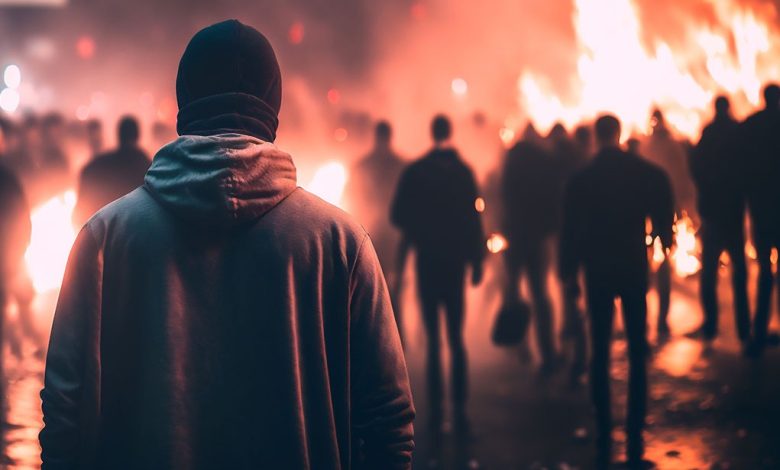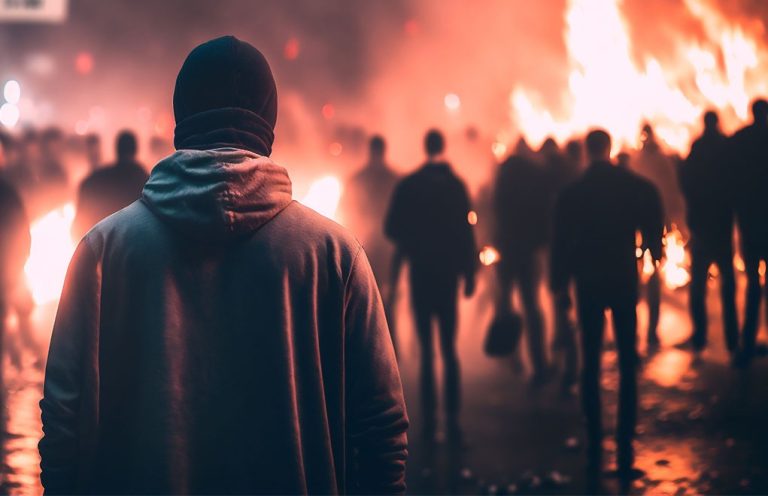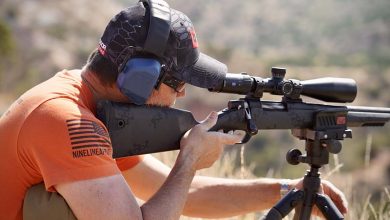The Boundaries Of Self-Defense


We discuss the limits of self-defense in the face of mob violence and when overwhelming numbers of unarmed threats turn deadly.
In recent times, the landscape of civil unrest has evolved and, with it, armed citizens have been forced to consider how they might respond if they find themselves amidst the unrest.
Consider the following tragic example of mob violence.
On November 1, 2023, 17-year-old Jonathan Edward Lewis Jr., a student at Rancho High School in Las Vegas, Nevada, was the victim of a violent attack by a mob of his fellow students. Lewis had been standing up for a friend who was being bullied by the other students. Tragically, Lewis succumbed to the injuries sustained during the assault on November 7, 2023.
The tragic beating death of Lewis raises important questions about the legal limits of self-defense. In this case, Lewis was reportedly attacked by a mob of 10 to 15 assailants, leaving him defenseless on the ground which ultimately resulted in his death.
From a use-of-force legal analysis perspective, the key question is: What actions would Lewis have been legally justified in taking to defend himself against such an overwhelming attack? Even if the attackers had no access to weapons, could Lewis have used deadly force to protect himself?
The Elements of Self-Defense
There are five key elements that determine whether a use of force is legally justified as self-defense:
1. Innocence: Was the person claiming self-defense the initial unlawful aggressor? In this case, the evidence suggests the mob attacking Lewis was the initial aggressor, making Lewis the innocent party.
2. Imminence: Was the threat of harm immediate and about to occur? The ongoing beating of the defenseless Lewis clearly meets this criterion.
3. Proportionality: Was the defensive force used proportional to the threat faced? This is the most complex element in this scenario.
4. Avoidance: Did the person claiming self-defense have a reasonable opportunity to safely retreat? In a “stand your ground” state like Nevada where this occurred, there is no duty to retreat when facing such an attack.
5. Reasonableness: Was the person’s belief that deadly force was necessary or reasonable given the circumstances? With 10 to 15 assailants surrounding and beating an unarmed, defenseless victim, this standard appears to be met.
Disparity of Numbers as Deadly Force
The key issue here is the element of proportionality: When does the sheer number of attackers constitute a deadly force threat, justifying the use of deadly defensive force?
The general rule is that you can only use deadly force to defend against a deadly force threat—one likely to cause death or serious bodily injury. A single unarmed attacker of similar size and ability typically does not meet this threshold, even if they throw a punch.
However, the courts have recognized that a large disparity in numbers can transform an otherwise non-deadly attack into a deadly force situation. As the number of assailants grows, even if they are unarmed, the threat of death or serious harm increases exponentially.
Applying the Law to the Situation
In the case of Lewis, he was facing a mob of 10 to 15 attackers. Given his defenseless position on the ground, completely surrounded, this disparity of numbers would likely be considered a deadly force threat under the law.
The courts have consistently held that an individual is not required to wait to be killed or suffer serious injury before using deadly defensive force. When confronted with the threat of death or grave harm from a large group of assailants, the law allows the use of force reasonably necessary to prevent that outcome—even if it means using lethal force against unarmed attackers.
Tragically, it appears Lewis was unable to mount any meaningful defense against the onslaught. But had he been armed and able to fight back, the law may have justified the use of deadly force to protect his life against this deadly mob attack.
Conclusion
While the loss of Lewis is heartbreaking, examining the legal principles around self-defense in such situations might help prevent similar tragedies. The law recognizes that when faced with the threat of death or grave harm from a large group of assailants, an individual has the right to use the force necessary to save their own life—even if that means using lethal force against unarmed attackers.
This is a difficult and nuanced area of the law, but understanding these principles can empower people to defend themselves when confronted with such overwhelming violence. Hopefully, the lessons from this tragic case can help protect the innocent and save lives down the road.
Editor’s Note: This article originally appeared in the August 2024 issue of Gun Digest the Magazine.
More Knowledge For The Armed Citizen:


Next Step: Get your FREE Printable Target Pack
Enhance your shooting precision with our 62 MOA Targets, perfect for rifles and handguns. Crafted in collaboration with Storm Tactical for accuracy and versatility.
Subscribe to the Gun Digest email newsletter and get your downloadable target pack sent straight to your inbox. Stay updated with the latest firearms info in the industry.







